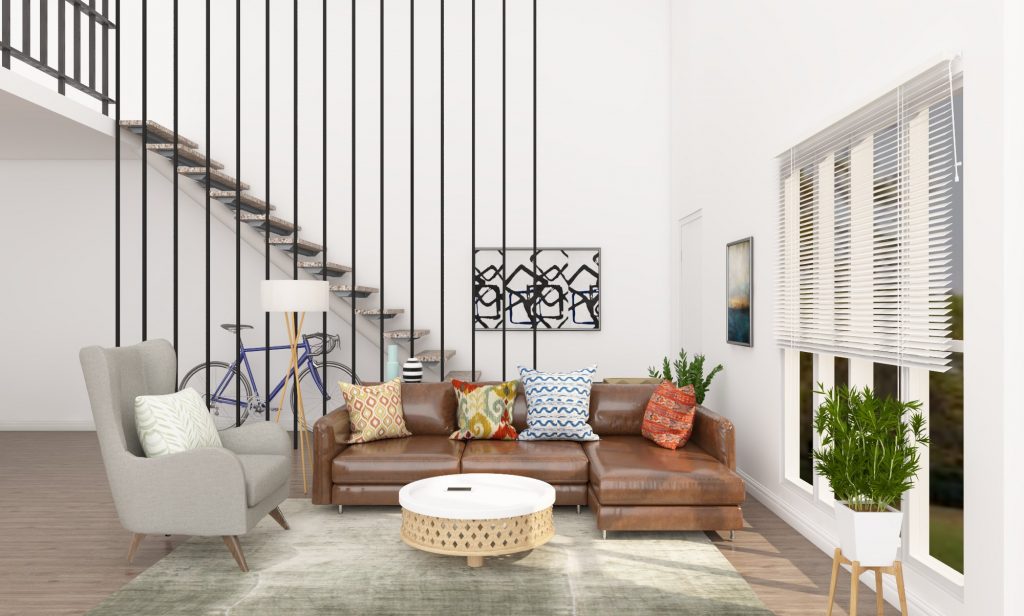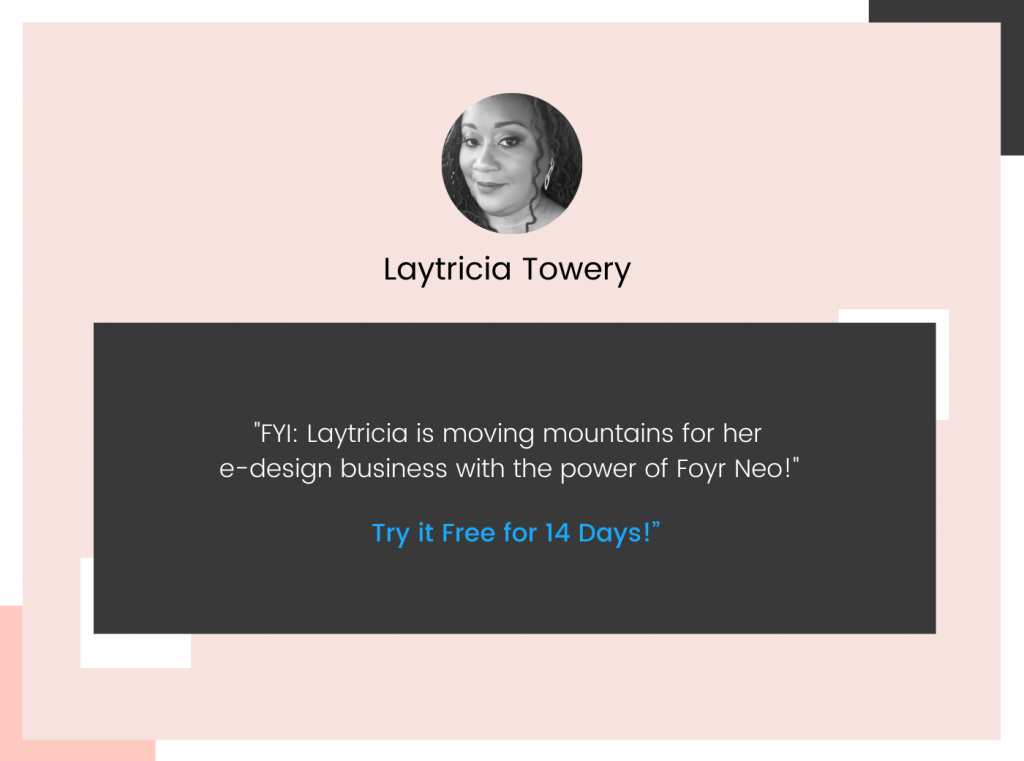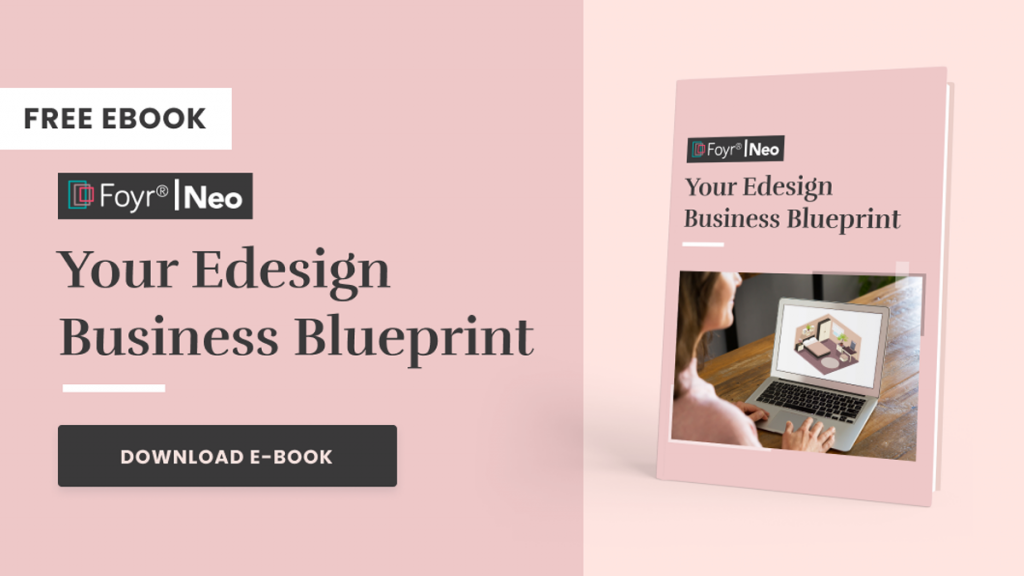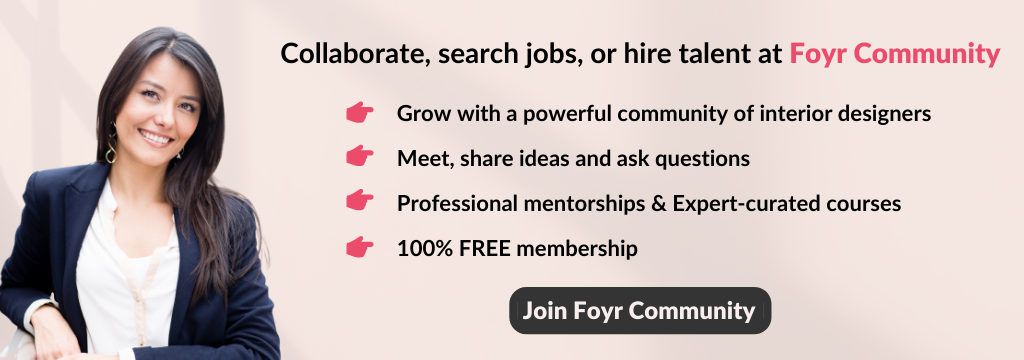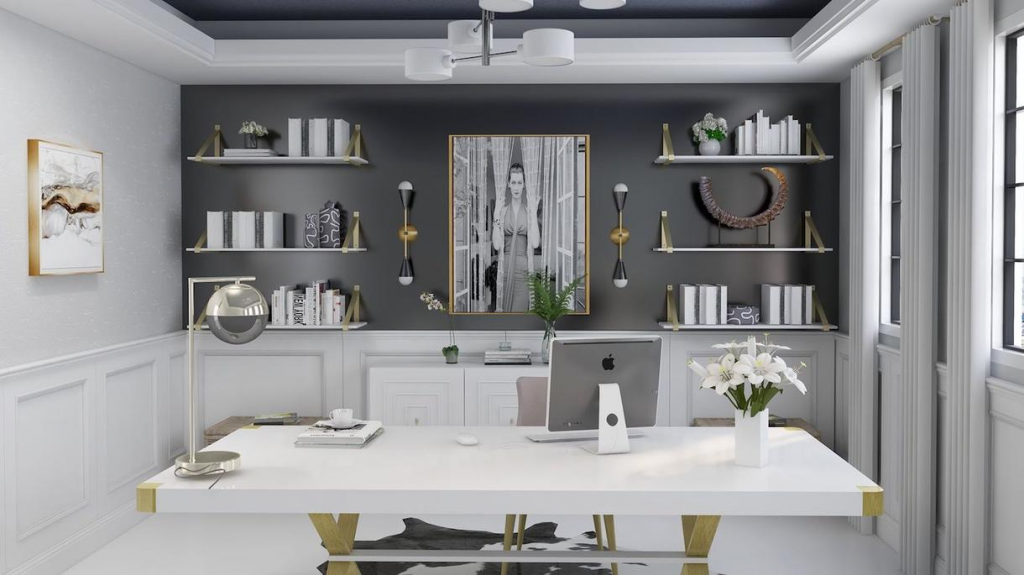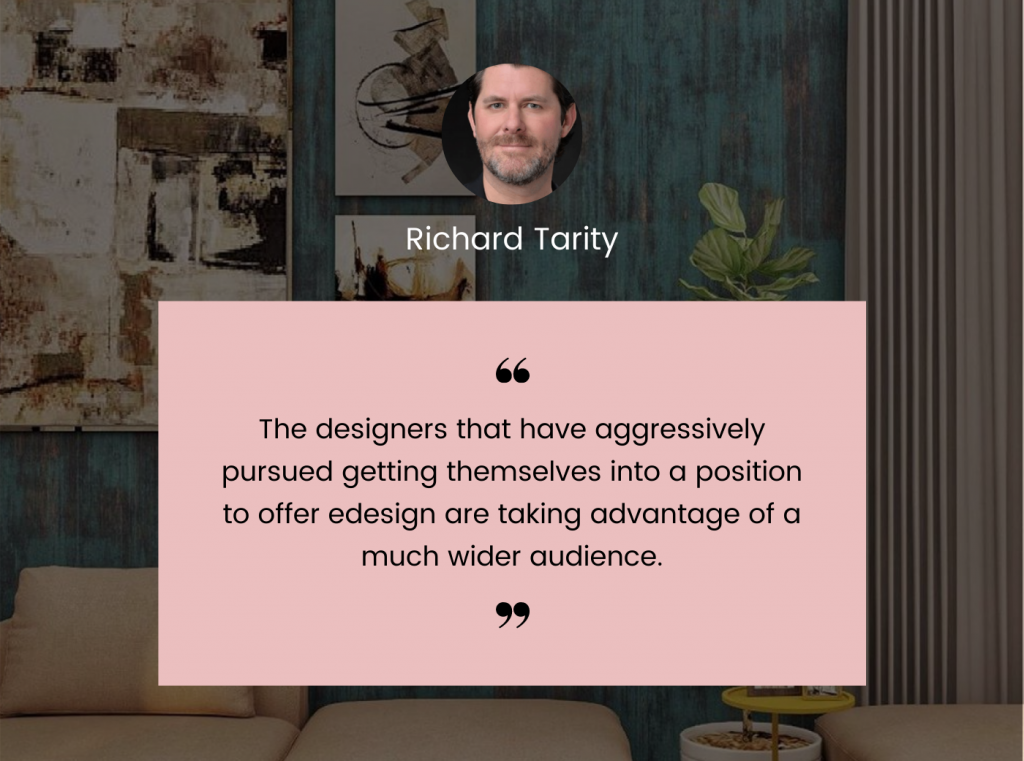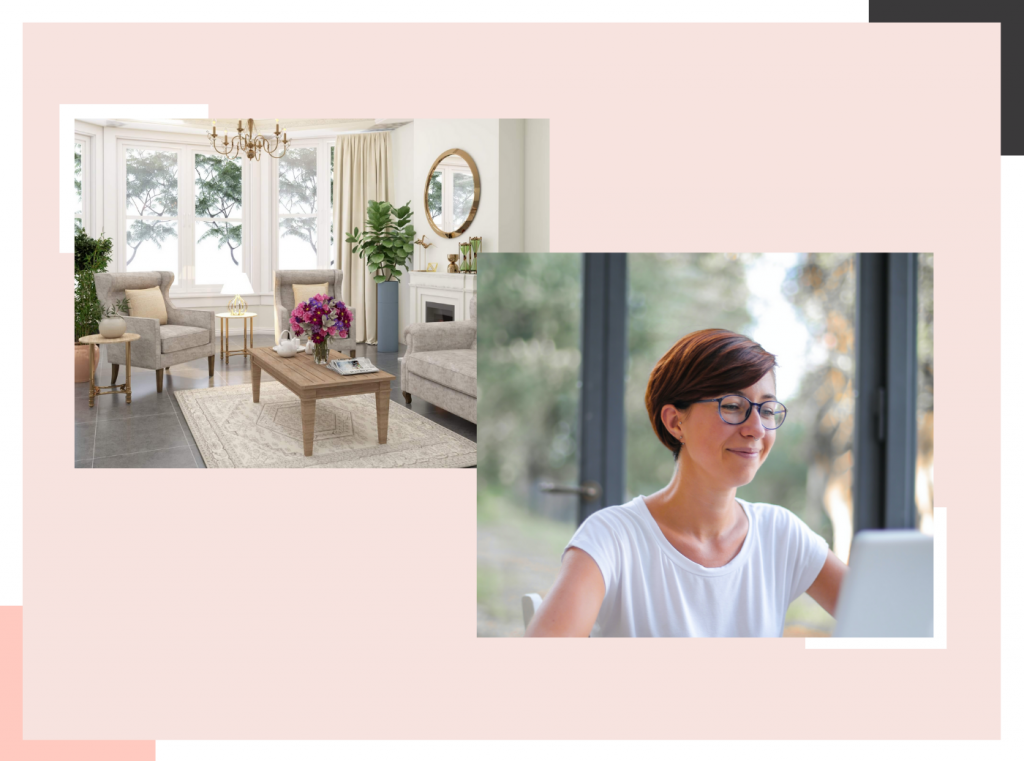E-design
E-design is the process of designing your space on an online platform. It enables an interior designer to communicate with other designers in design firms globally. The services offered in e-design to homeowners in New York and other cities include space planning, and designing concepts such as color palette selection, complex materials like flooring in the living room, countertops, and cabinets. The home design also involves soft furnishings such as furniture and window treatments.
The design concepts also include arts and accessories. Using online interior design services, one pays for full-service at a flat rate per room and it is usually paid up front. E-design services have spurred since the pandemic began in 2019 and professional interior designers have found it relieving than closing their businesses.
Read also – What is E-design?
E-design Services
An e-design service will require an individual to take photos of the space, draw the floor plan and present measurements and inspirational pictures. When your e-designer has the details required, they will present a concept board or check on the style board to indicate how he interpreted your design needs and style. When you approve the concept board, you will then work in unison with your interior designer in selecting the furniture online from other vendors.
Once the final plan is approved, the final design package will be presented with a shopping list, the furniture layout and 3d renderings, the style board, and the project instructions. Using the design and the resources provided, you will then complete your space design at your own pace.
One can also fill a questionnaire on the feedback of the services offered. The rest of the work on their interior spaces can be done using the clients’ smartphones. They can also share the business model and design software with the designers on social media.
Initially, some companies were using the matchmaking policy to link their clients with the appropriate designer. They would collect information online using quizzes. Due to the lack of personal connection and checking on the client’s well-being, the method failed. However, some companies have specialized in it and have developed better customer care services.
The e-design developers had borrowed the idea from apps like Uber, Lyft, Tinder and Bumble. They assumed the same approach would work for the design app but after a while, the matchmaking companies collapsed. It led to the resilient companies working by trial and error means to attain their goals and get referrals from the services. There were new entrants in the market who picked up from the failures of their predecessors and they managed to correct some mistakes.
The journey has not been smooth but currently, the transition to the new normal is improving to suit both parties. The start-ups can use the virtual interiors, to advance paneling and send invoices to clients more effectively.
Read also – The Complete Guide For How To Start An E-design Business
History of E-design
As e-design started, its target was on the small and medium-sized individuals who could not afford the services of the traditional interior designers. The individuals also did not want to be involved with dealing with the interpersonal nature of working with a designer in person.
Some other apps sprung up and tried to imitate them but failed miserably while others maintained their resilience. Some companies that did not withstand the pressure include Laurel and wolf, Home polish, Decor-aid, and design advisory group.
Laurel and wolf, for example, formed by Laura Fine were amongst the earliest to publicly announce the business opportunity on e-design. It led to attracting investments from great venture capitalists from across the globe. Its standard package was $299. The issue on its administration processes resulted in the company’s downfall. However, its re-launch with different management in 2020, spurred its growth.
The Home polish gained recognition which collapsed in 2019. The underlying reason was also similar to Laurel, improper administration. Their winning quality included sending their interior designers to the exact location to take the measurements and not relying on pictures.
The rest of the processes would be done online. The company excelled in marketing but forgot to lay down infrastructures to support its business plan. Its use of freelance designers did not provide them with tools to offer quality services to its customers.
Read also – E-design Thriving In The New Normal With Online Interior Design Services
E-design for Interior Designers
Initially, Decor –aid was a traditional match-making interior design company. Interior designers would conduct their services in person and the company would take care of the project management. However, the company was shut down in 2020.
The Design advisory group is similar to Décor-aid. However, its status is unclear since 2019. The company was strictly a match-making one for its customers and designers with no other support. It worked with high-end top tier designers.
Among the companies that have managed to withstand the test of time include Decorist, Modsy, and Havenly. Their success stories lie in identifying the target markets, carrying out an effective marketing and building business plan infrastructures to support their businesses. The Decorist offers its services at a flat fee with a range gap of $299 to $1299.
Read also – How To Market Your E-design Services?
The clients can choose their design plan from the company’s profile or they can be matched to a designer depending on their preferences. The client is then supposed to send their pictures. The designer’s role is to offer them a furniture layout suggestion through mood boards or from 2D presentation models.
Modsy is an all-purpose designer solution. The client uploads their pictures on their space and the company converts it to a 3D rendering. The client then describes the occupants of the space and submits their quizzes online.
The design quality is then converted to a 3D rendering. The company tries to make the whole process more company based and reduces the functions o9f the interior designer. The clients have the freedom to shop for products from their websites. The company is able to manage the orders presented and the services offered through the platform.
Havenly is the cheapest amongst the match-making companies. Its charges range from $ 79 to $199.The prices vary depending on the size of the rooms, and whether a floor plan is required. The products can also be purchased from their websites.
An interior designer comes to your space for consultation services and evaluates it. He takes the required measurements and offers a presentation of the design proposal. It is also part of his role to shop for furniture and accessories.
To compensate for the services offered, your interior designer may charge per hour. A residential plot may take about 10-20 hours depending on the project scale. He may as well offer to charge at a flat rate or as a percentage of the total project’s budget.
Read also – How Much Do Interior Designers Make?
The pros and cons between interior design and e-designs
Using traditional interior design is financially risky as compared to e-design. This is mainly because one may have mistakes that may require the interior designer to consume more time on the project. It will consequently mean additional expenses as they are paid on an hourly basis. It will also imply the sofas purchased may be either too small or large to fit in a space.
However, with e-designs, it’s ideal for anyone who wants to be in charge of the project, provided they have the interior design guidelines. The advantage of e-design is that you can work with any interior designer globally. The disadvantages are that e-designers may have limited knowledge regarding your space and you also have to do the fixing personally.
The e-designers are not present in your spaces. Therefore, offering them incomplete or inaccurate details may affect the outcomes received. Intuitively, some designers can tell when a project’s space measurement is a miss and may seek clarity to avoid further damage.
The platform only offers an individual an opportunity to learn how to work and complete the project but since it’s online, the individual has to be proficient in fixing the interior decor with ease.
One can then change the e-design plan or the e-designer as they please with only a few additional charges. Therefore, compared to the traditional interior design, it is cheaper as one will only pay on a flat rate, unlike the traditional hourly rate.
The e-design process gives one an opportunity to do some DIYs and learn in the process. The client only requires taking pictures of their homes and sharing them with the designer and they also get the opportunity to share their inspirations.
Read also – How E-design Benefits Interior Design Business?
Factors to consider on determining e-designs for a project
E-design is perfect for your company if require an expertly styled home with a fixed budget for your designs. The quality of value for money comes in handy with e-designs. It is also suitable for individuals with a great follow-through habit.
They can follow the steps to the core without omitting several steps. The client should also be ready to personally hire some professionals such as painters and installers to get their jobs done. They can as well do some manual tasks and paint colors without professional help.
One can also utilize the e-services if they want their projects completed sooner. When the client already is inspired and only requires help in putting it together in a logical way, an e-design service will be suitable.
Read also – Everything About E-design
Local designer services
One can seek the traditional interior designer’s services if they prefer a person-to-person communication, wants their measurements and requirements done for them, require custom tasks like cabinetry or construction done, when they require deliveries and their orders handled, and their spaces handled at once.
Myths on e-design
Some customers assume that the products are pre-made. It is not entirely true as the e-designers also offer custom made products. They work with specific needs of a client and requirements before creating their unique designs. Some products used in e-designs may be repeated but they are usually retail items as opposed to the customs only.
The E-design process
Just like other electronic processes, e-design has several processes and expectations to be met at each stage. The first process lies in the initial call. One can chat about their space through video chatting. The client gets the platform to speak about their former experiences, what they like, do not like and expectations.
The budget and the timelines are also discussed to meet the client’s goals. The second process is where the clients refine their aesthetics. A client is asked to share photos of projects that impress them. They will then be asked questions to clarify and make sure their needs and preferences are met.
The third step is in presenting the concepts. A concept for an individual’s pace is put in place including their mood boards, floor plans, furniture and material selections, colors and more. The client also has the platform to offer their feedback on selections and aesthetics.
The fourth step lies in the design guide. The client is offered a comprehensive design guide including the materials they have chosen and where to find them.
The final process is actualizing the services. As the e-design projects are carried out on a smaller scale, mostly one room at a time, its turnaround time is faster. The fees are also flat rates with no hidden costs unlike in traditional interior design services where a client has to pay retainer services, reimburse travelling costs, other expenses and the designer’s pay is hourly.
The client is able to save more as they do the practical bits of measuring and handling the orders. There are no pressured timelines as the client does their own shopping and sets everything for themselves. The major bit of the work lies entirely on the client.
Read also – Expanding Your Virtual Clientele for Your E-design Business
Conclusion
Interior designers have expanded their market niche globally through the utilization of e-design services and have gained more experience in the process. Reaching out to a broader audience and potential clients lies in the customers accepting to utilize the online platforms. The platform makes running the business flexible, incur low overhead costs, and streamline the workflow. The virtual designs have been of great help to interior designers.
The article is suitable for interior designers and interior design students as it touches on the essence of using e-design services as compared to traditional interior design services. The aspects to consider before deciding on the e-design services are also presented to assist in making quality decisions.
The students can access the web profile on Foyr Community. The Foyr community is a platform that builds on designers and students equipping them with skills. The community is inclusive of a jobs section where users can post or find freelance jobs based on rendering designs, creating designs and designing software tools.


